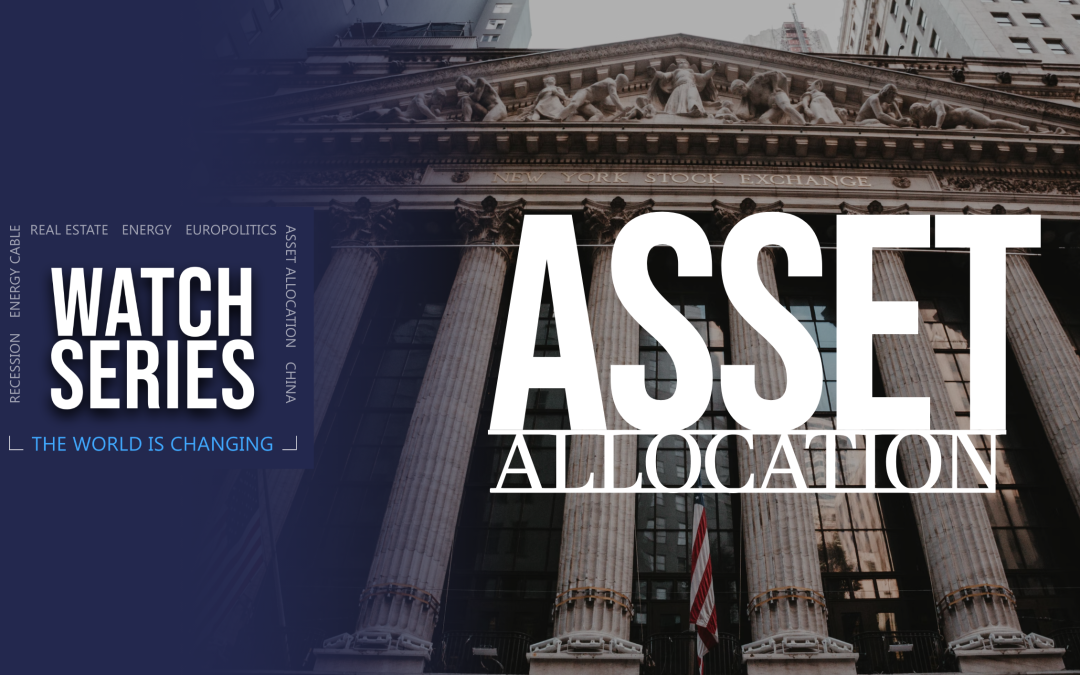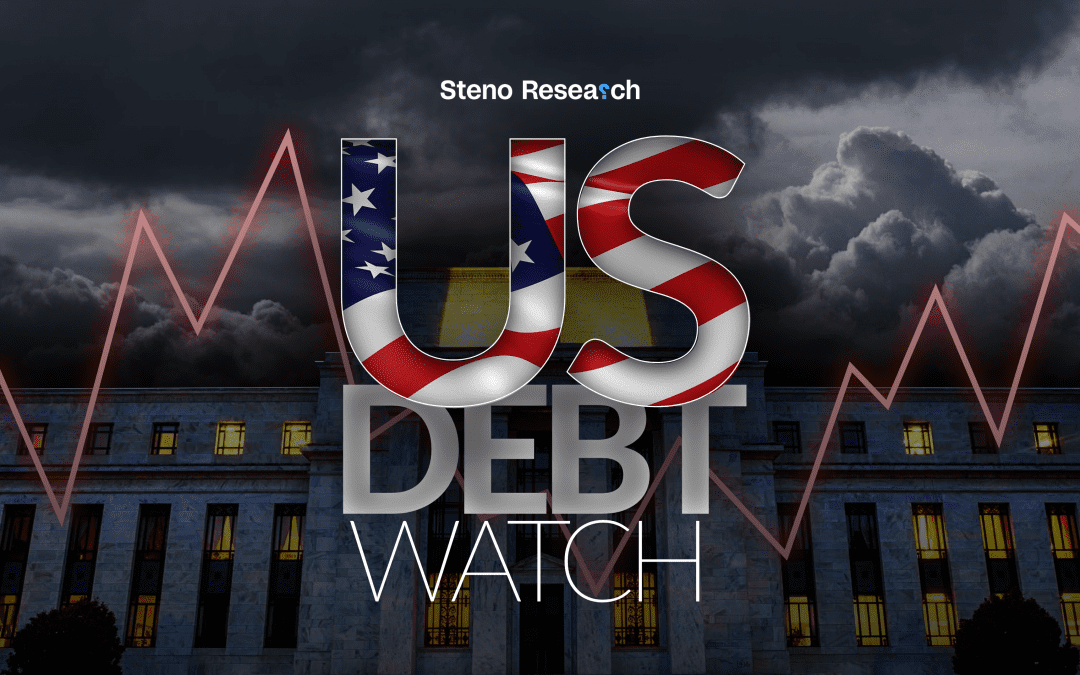The inventory data is starting to support our bearish view on copper, while the precious metals story depends on whether we are in a bull- or bear-steepening scenario. Loads of copper will arrive on Western exchanges before the end of the month.

The “Watch Series” is a collection of individual series such as Europolitics Watch, Inflation Watch, Real Estate watch and much more. Stay tuned for in-depth coverage of your favourite subjects.


The inventory data is starting to support our bearish view on copper, while the precious metals story depends on whether we are in a bull- or bear-steepening scenario. Loads of copper will arrive on Western exchanges before the end of the month.

The PPI serves as a friendly reminder of the cyclical dynamics brewing beneath the surface of the global economy, which contrasts with the current sentiment. We are not convinced of a major slowdown, but we obviously find insurance cuts more likely than a few weeks ago. Here is how to play it..

Take aways: This currently looks more like normalization than weakening More fuel to the story of an income driven cycle The productivity / disinflation story of ‘23 likely a hoax The post Covid labor market has been especially good for low skilled workers Welcome to this short labor market watch on the back of this week’s NFIB and CPI numbers. Currently the labor market has softened considerably from tight conditions in 2022, yet there is still some time before this slowdown potentially leads to a recession. From the NFIB numbers we already got more hints of the deflationary trends suggested by this month’s CPI report as price plans continue their decrease. For more on the CPI release, you can find our breakdown here. Chart 1: Currently this looks more like normalization than recession From the dashboard below our main takeaway is the lack of recessionary vibe that pockets of the market are screaming about. The optimism index has been rising over the past quarter and inflation is still looking like a far greater threat to small businesses than interest rates. Also noticeable is the drop in price plans for the next 3 months which has been grinding lower over the last quarter fueling the disinflationary story in the US… Small businesses giving Powell the green light to start rate cuts if yesterday’s CPI report wasn’t enough? In the job component there’s a notable disparity between job openings and employee compensation, with the gap reaching its third lowest level since 2000. […]

Ay Caramba! This is exactly the kind of soft inflation report the FOMC had hoped and prayed for. Interestingly, celebrations are also being heard in Beijing and Tokyo, which may drive broader asset allocation trends in the coming weeks. It’s time for a blow-out top now.

In this primer on USD liquidity, we aim to discuss why and when liquidity matters, and also highlight the two major drivers of liquidity until New Year’s. Liquidity will continue to improve.

The soft-flation vibes from China could impact the inflation report from the US, but the insurance category remains a dark horse. We see a report mostly in line with consensus with dovish risks in headline inflation.

There are currently no signs in broad positioning data that indicate markets are truly betting on a recession, which poses a brighter outlook for risk-assets than some are fearing.

Freight rates continue up, but we are yet to see the broad repercussions. Meanwhile, we are getting mixed data signals from the US economy and shipping companies, hinting that being long energy/commodities is NOT a no brainer.

It’s not that we neglect the risks of a recession; rather, we find the risk/reward in pursuing these concerns in the markets to be unfavorable. At present, the economy does not appear weak enough to warrant running for the hills.

The growth input has started to turn shakier in the US, and our high-frequency indicators have flatlined for July. Inflation is softening (before a potential revival in H2-2024), while liquidity is improving. Here is what it means for markets..

Markets have been eagerly chasing bullish price action in JPY pairs since Ueda’s appointment, constantly expecting different outcomes from meetings and speeches. But what if BoJ doesn’t want the JPY to strengthen?

Another horrendous ISM Services report has catapulted recession chatter right back into the limelight. As the ISM Service numbers admittedly look recessionary, we take a look at the pros and cons of trusting the ISM signal.

While there are still substantial premiums priced into European equities and bonds relative to other regions, it has not truly spilled over to FX, where volatility has barely moved. Are markets starting to board the Europe-train again?

Crude oil’s strong performance and rising freight rates signal potential inflation pressures, despite current weaknesses in goods inflation and metal prices. The market is though not overly scared of it (yet), but the curve steepening is a first hint of something brewing beneath the surface.

We are off to a flying start in our bets on the US consumer. We consider the “excess savings depletion” narrative vastly overcooked, and find the playing field to have changed leaving consumption solid in the month(s) ahead.

There is a solid risk/reward in betting on a hawkish surprise to the European HICP numbers in June as the market consensus is soft. Beneath the hood, some of the forward-looking indicators show signs of continued disinflation.

With USDJPY refusing to back down either in price terms or intellectual bandwidth expended, we take a closer look ‘under the hood’ using our suite of quantitative tools to more objectively assess the current set-up. What would it take to turn the tide in price action? Is there anything actually ‘macro’ to this move? Have we been here before?

The outlook for USD rates is turning increasingly soft given the latest soft inflation prints, and with PCE consensus Friday looking relatively soft, the trend will likely continue over the coming weeks. Do we agree? No, and neither does fast money.

Markets were allowed to run past the previous line in the sand of 160 in USDJPY, and we are hence stopped out of our position.

The debate on whether this is a Burns or a Volcker-like scenario rages on, but re-inflationary forward-looking indicators are increasingly coming to light. This is particularly evident in countries that have already cut interest rates.

The oil market is one of the few appealing commodity longs currently, as cluster risks in the natural gas and metals space will take center stage into July.

The US exceptionalism was once again solidified with the release of the PMI numbers. While we don’t find a lot of forward-looking signal value in S&P PMIs, it’s still fair to ask whether the slowdown is even happening.

Is there a path to a rate cut from the Fed due to receding inflation pressures in housing and insurance? If goods inflation remains muted, the Fed will likely get a chance to cut. We take a look at the details here.

We are not miles from the needed threshold level of USD reserves in the system and the Fed is aware of that. This is a strong reason to believe that liquidity conditions will remain benign from here on a trend basis.

The positioning in US Tech is still not out of the ordinary, while commodity positioning continues to stay out of whack with price action.

The net developments in Norges Bank rate path model suggest that Norges Bank will remain patient. Not much has changed since March. This is net hawkish relative to market expectations.

Bearish sentiment surrounding shipping equities these weeks.. Question is: Do we short?

We see a strong risk environment in July and the spending patterns could pick up again underpinning the “laggard” case in equity space. Find out which one here..

The French election risks leave Europe uninvestable from an equity perspective for now, which leaves opportunities ahead in USD markets. We continue to see strong performance in USD liquidity sensitive trades paired with softness in commodities.

Taking profits in natural gas!